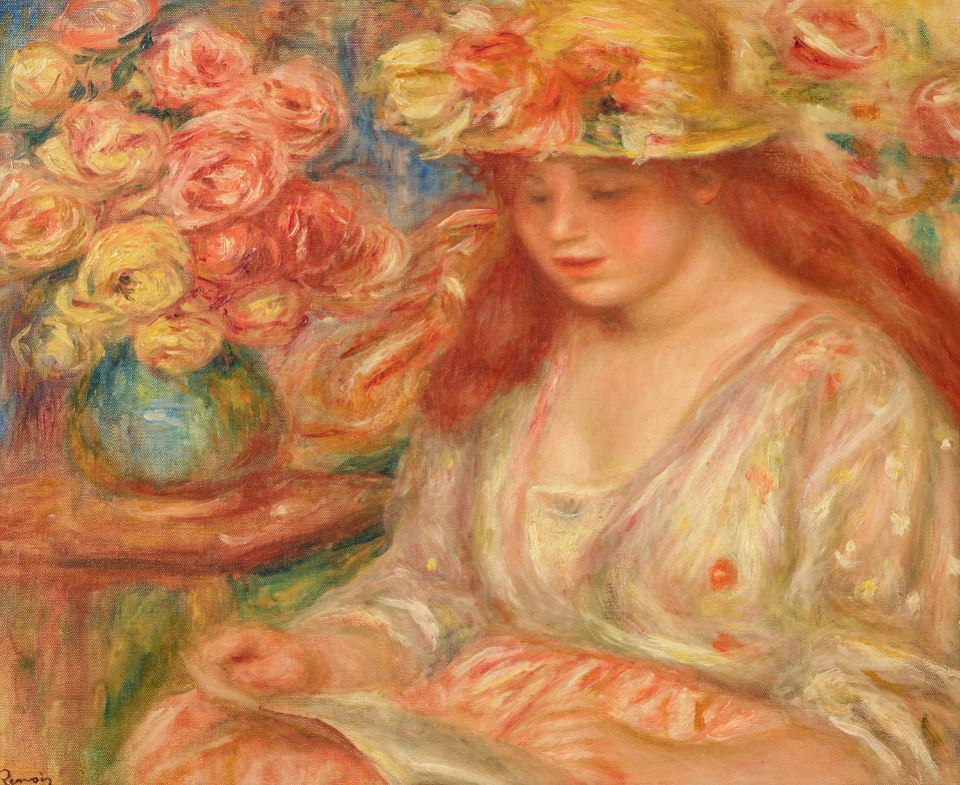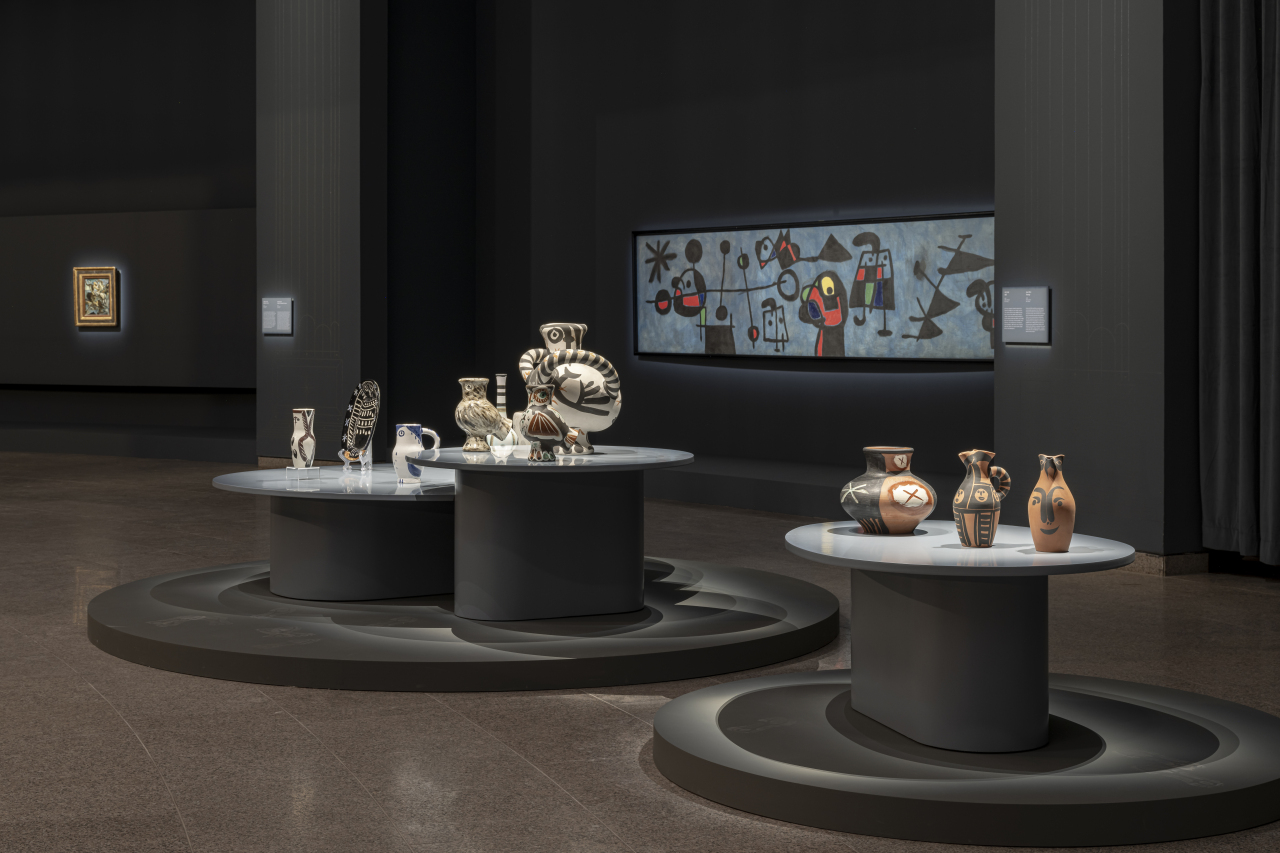‘Belle Epoque’ featured at Lee Kun-hee collection show
By Park YunaPublished : Oct. 10, 2022 - 13:45

You are invited to the “Belle Epoque,” or “beautiful age,” a period in France spanning the late 19th and early 20th century when the European county enjoyed cultural enrichment from prominent artists who came to Paris from around the world.
The exhibition “MMCA Lee Kun-hee Collection: Monet to Picasso, and the Masters of the Belle Epoque” at the National Museum of Modern and Contemporary Art, Korea in Gwacheon, Gyeonggi Province brings together eight artists -- Camille Pissarro, Claude Monet, Joan Miro, Marc Chagall, Paul Gauguin, Pierre-Auguste Renoir, Salvador Dali and Pablo Picasso – who interacted and inspired one another in the French capital beyond their nationality.
The circular exhibition hall was designed to create the atmosphere of the time in Paris, with lamps and chairs installed at the center of the hall to make visitors feel as if they are sitting in an open-air cafe in Paris.

Featuring 90 ceramic pieces by Picasso and seven paintings by Pissarro, Monet, Miro, Chagall, Gauguin and Renoir, the exhibition consists of donated artworks by late Samsung Group Chairman Lee Kun-hee last year.
The first section explores how Pissarro and Gauguin were inspired by one another during the time. Pissarro (1830–1903) was an Impressionist master who often captured scenes of markets where people from diverse classes gathered as seen in “The Cereal Market in Pontoise.” He was a mentor to Gauguin (1848-1903) and helped him transition from a stockbroker to a painter. Gauguin’s painting “Crane on the Banks of the Seine” is part of the exhibition.
The next section, “Masters Who Blossomed through Friendship and Respect,” sheds light on works by Monet (1840-1926), Renoir (1841-1919), and Picasso (1881-1973). Monet and Renoir are known as particularly close artists in the impressionist circle.
Monet’s “The Water-Lily Pond” and Renoir’s “Andree in Yellow Turban and Red Skirt (Reading)” at the exhibition are from the artists’ latter years. The section also offers a comparative view of Renoir’s paintings and Picasso’s ceramics based on their shared motif of women.
Miro (1893-1983), Dali (1989-1904) and Picasso were born in Spain but met in Paris supporting and motivating each other. The third part of the exhibition shows the paintings by Dali and Miro as well as Picasso’s ceramic works, which center on shared themes and forms. Dali’s Family of Marsupial Centaurs (1940) depicting the half-human, half-horse creatures from Greek mythology are presented alongside Picasso’s ceramic works that are also influenced by mythology.
The fourth section presents works from Picasso and Chagall (1887-1985). Born in Russia, Chagall began his career in Paris in 1910 and produced works influenced by Picasso’s cubism. Chagall made many efforts to meet Picasso upon settling in Paris, but the two did not meet until the late 1940s in Southern France, where Picasso was producing his ceramics.
Chagall painted beautiful and dreamy moments of life using the motifs of flowers, still life, animals, and people playing musical instruments or dancing much like Picasso, who also produced numerous ceramics with similar themes.
The exhibition runs through Feb. 26 at MMCA Gwacheon and reservation in advance is recommended.
By Park Yuna (yunapark@heraldcorp.com)








![[Graphic News] More Koreans say they plan long-distance trips this year](http://res.heraldm.com/phpwas/restmb_idxmake.php?idx=644&simg=/content/image/2024/04/17/20240417050828_0.gif&u=)
![[KH Explains] Hyundai's full hybrid edge to pay off amid slow transition to pure EVs](http://res.heraldm.com/phpwas/restmb_idxmake.php?idx=644&simg=/content/image/2024/04/18/20240418050645_0.jpg&u=20240419100350)






![[From the Scene] Monks, Buddhists hail return of remains of Buddhas](http://res.heraldm.com/phpwas/restmb_idxmake.php?idx=652&simg=/content/image/2024/04/19/20240419050617_0.jpg&u=20240419175937)

![[KH Explains] Hyundai's full hybrid edge to pay off amid slow transition to pure EVs](http://res.heraldm.com/phpwas/restmb_idxmake.php?idx=652&simg=/content/image/2024/04/18/20240418050645_0.jpg&u=20240419100350)

![[Today’s K-pop] Illit drops debut single remix](http://res.heraldm.com/phpwas/restmb_idxmake.php?idx=642&simg=/content/image/2024/04/19/20240419050612_0.jpg&u=)